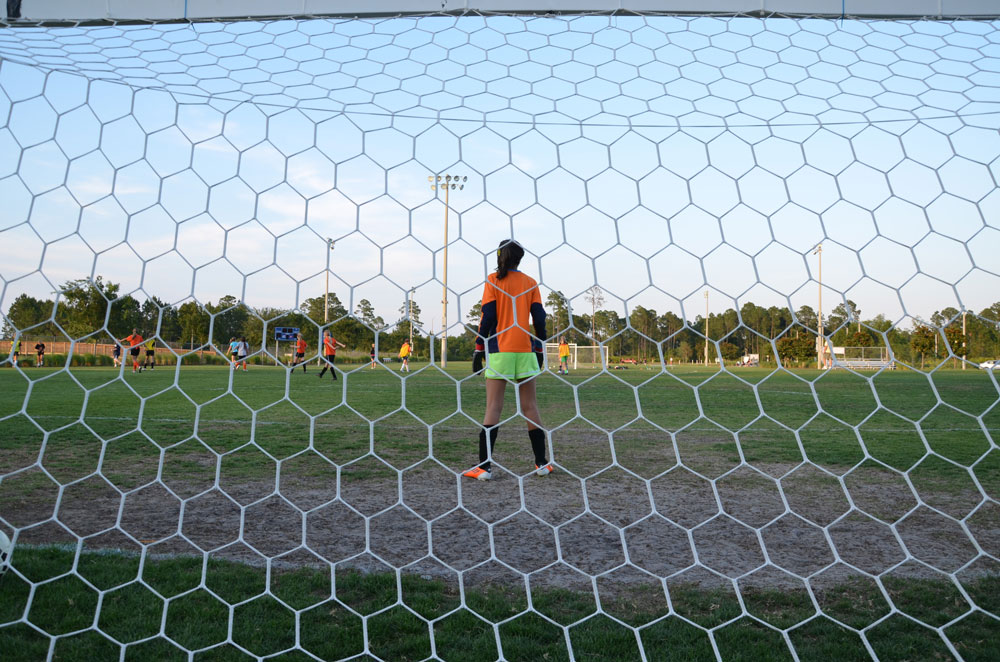
Note: this is the first of two articles today on Flagler County’s continued interest in a $110 million sports complex in Palm Coast’s west side. See the second article, a fact-check, here: “How Flagler County Misuses Numbers in Pitch of $110 Million Sports Complex.”
![]()
County officials might want to get on the same page with their consultant before appearing before the County Commission to make prematurely rosy projections.
County Tourism Director Amy Lukasik appeared before the County Commission Monday to discuss an analysis by a consultant of the local market for a highly speculative and large $110 million sports complex a private company, Synergy Sports, would build in partnership with county government.
“Before we dive further into looking into the proposal from Synergy Sports, we wanted to first answer the question: can the market still bear this type of complex, this size?” Lukasik told the commission. “So if the answer was no, then our work here is done, and we would report that. But as Dan says, the answer is yes, that it’s still a viable project. So what we then will do is dive further into Synergy Sports.”
Lukasik was referring to Dan Fenton, managing director for tourism development with Jones Lang Lasalle, known as JLL, the Chicago-based real estate brokering and management company. The county contracted with JLL to analyze Synergy’s proposal.
Fenton did not go as far as Lukasik. He corrected her: “Amy used the term viable. We’re not quite saying viable yet,” Fenton said in one of many qualifiers and equivocations that accompanied his summary analysis to the commission. “What we’re saying is we do think that there’s a market. But when it comes to this next set of work, we’re definitely going to dig into all of this very deeply, because the deal structure and all of that is critical.”
In other words, the analysis was far from complete (phase two is ahead), and what data was presented to back up even the conclusion that there is a local market is scant, with little context, and with some of the figures presented having no direct relationship to the local and regional sports market.
At least one county commissioner is deeply skeptical of the scheme that would depend on millions in taxpayer dollars to emerge, let alone succeed.
The proposal is by a company with a limited track record: the few facilities Synergy has helped develop have not yet operated long enough to provide an objective analysis of their performance.
Synergy is proposing to build a 100,000 square foot indoor, multi-purpose sports facility surrounded by 20 outdoor fields and 3,000 parking spots in what is referred to as Palm Coast’s “westward expansion,” the thousands of yet-unbuilt land west of U.S. 1. Rayonier, which owns the land, is interested in the sports complex as a fuse to further development.
Synergy claims the facility could generate up to 400,000 “unique visitors” (meaning 400,000 individual people throughout the year, not including repeat visitors), and up to 125,000 hotel bookings–even though in all of last year, Flagler County drew a total of 100,000 visitors, most of whom went to the beach.
“I noticed throughout this report, there was a lot of talk about market saturation: Need to move quickly. You need to move quickly,” Commissioner Leann Pennington said, referring to the presenter’s sense of urgency. “There’s so many people looking at this, which always comes back in my head, if there’s a demand for it, the private market would fund it. But here we are in a p3 situation with it, which sends red flags up for me.”
Flagler County would be competing with Volusia County and St Johns, which are seemingly rushing ahead with regional complexes of their own, worrying Pennington about “oversaturation,” especially when the county has “serious needs with infrastructure we should be looking at.”
Pennington mentioned the 125,000 bookings, which average out to 342 bookings per night and 2,400 on weekends–just for the sports complex, a seemingly outlandish projection. She was skeptical of the suggestion that Flagler County would be a tourist destination without particular attractions. And she questioned Synergy’s claim that annual naming rights alone would generate between $4.3 million and $6.1 million for the facility (in an area where not a single facility is operating on naming rights beyond contributions of a few hundred or a few thousand dollars.)
“The moment we don’t nail the naming rights, we’re in the red,” Pennington said. “I think it’s just a speculation project, really for me.” She doesn’t think the county should be into speculation.
Fenton sought to reassure the commissioner: “When we dig into this and think there is either a different approach, or really question the current approach, or maybe have some different ideas, that’s all going to be part of what we look at.” And again, he stressed: “I just don’t want it to be assumed that because we looked at the market and thought there was value, that we think necessarily, the deal structure doesn’t need to be relooked at.”
Other than Commissioner Pam Richardson, who worries about the size of the complex and is reserved about its viability, other commissioners did not tip their hand, though County Chair Andy Dance is looking for answers about naming rights, expense projections and other emerging regional sports complexes.
Lukasic reminded the County Commission of the April 7 presentation by Synergy Sports of the proposed sports complex through a private-public partnership.
Lukasik did not fill them in on the previous if quite recent history of the proposal: it began in Palm Coast as a $93 million pitch by Synergy, in February 2024. For the proposal to stick, Palm Coast government will have had to repeal a provision in the city charter prohibiting the city from entering into the sort of financial arrangement the Synergy proposal entailed. Palm Coast tried repealing the provision in a charter amendment last November. It failed decisively, and largely because of the tie-in to the sports complex: voters appeared not to be inclined to be on the hook for any part of the speculative venture.
Unbowed, Synergy and Flagler County government, with Palm Coast’s support–the sports complex location is unchanged–teamed up to attempt the proposal through county channels. By the time Synergy made its presentation to the County Commission last Aptil, the price tag had grown to $110 million.
Commissioners were willing to listen and explore the idea further, even though at that point the plan projected an annual $6 million contribution from the county, as rent payment, to make it viable. The county doesn’t have that kind of money. It couldn’t even agree on a plan to fund its beach-protection plan. It’s not about to take on a luxury item that would cost half the needed annual spending on a beach plan, especially when the luxury item is predicated on a slew of speculative numbers.
And yet: the commission directed Lukasik and Synergy to plow on with a “deeper level of due diligence,” as Lukasik put it. So the county contracted with JLL to do that part of the work.
The analysis was more of an overview of existing documents. JLL talked to local department heads and reviewed a local sports facilities study, along with the Synergy plan, which Fentoin described as “more aspiration” than, presumably, fact.
Fenton was himself at times aspirational.
“The idea of being able to have a centralized place that can do both indoor and outdoor sports, we think that’s a very big benefit of what’s been proposed here,” he said.
“Youth sports continue to sort of outperform others,” he continued. “There are always new sports that are coming up. So it’s not, it’s not a stagnant market in terms of what the activities are that continues to grow, and we think the complex has that potential to be able to support the growth in the future.
The complex would be built in the midst of 92 local facilities and 141 regional facilities. “There is certainly a lot of supply. When you think about the facilities that are there,” he said, but not like the Synergy facility, which has its likes only in a few places in the state. “We found two where we thought they really have some similarities in terms of both indoor and sort of outdoor capacity.”
Still, he stressed, building a facility and expecting people to come is not realistic. Only special features can make such a facility competitive. “We think what is being proposed will provide a competitive experience, but that’s an important piece. But this is not just a if you build it, they will come market,” Fenton said.
The analysis suggests that the Synergy facility could be the catalyst for new tournaments locally. How? That was not made clear. It also found that there is “excess demand” from local sports teams and organizations for the existing teams. New fields would benefit them. But local teams don’t bring visitors or outside spending.
JLL will conduct further analysis to review the performance of the few facilities Synergy has been involved in, the financial terms and obligations that would be entailed, the sort of commercial naming rights that could be generated to help fund the facility, and so on. The commission is expected to hear those findings on Dec. 8.






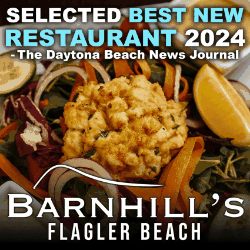









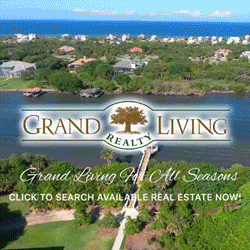
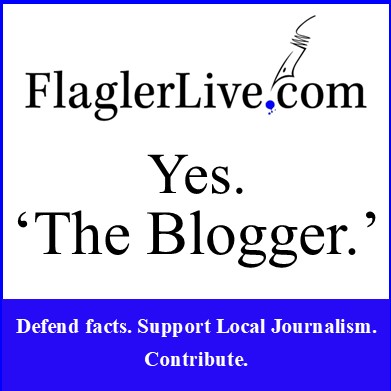



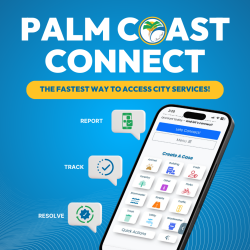



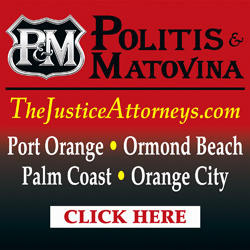
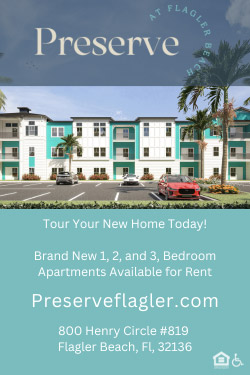



Mr. David says
Sure! Let’s add a station to connect with the new underwater monorail!
Idiots.
Larry says
No!!!
The project is guaranteed to be an expensive failed money pit for taxpayers. The hotel and naming rights projections are so outlandish that it makes one question every single thing that Synergy says. Sounds like a con job to get money from taxpayers.
Synergy has no track record. That alone should toss out the project. Add their outlandish projections, and you realize it’s a con job.
2 abutting counties (to the north and south) already started building new sports facilities. Market saturation.
Flagler county doesn’t have the money to throw away on this guaranteed failure. Flagler county doesn’t even have the money to fully staff the new library and library staff is mere pennies compared to the sports complex.
layla says
I hear parents say that they spend a lot of time driving to competition at other counties to attend tournaments. We host a few here but are limited in our abilities.
We need to grow, people. We haven’t had a tax increase here in years. We are going to die on the vine economically if we cannot do any better than this.
Tired of it says
Given our county’s track record on building projects, do we really think they can do this? The purchase of the old contaminated hospital for more than their own staff said it was worth, the moldy Sears building disaster, the old decrepit, failing water plant, the splash park disaster and on and on and on…And let’s be realistic, who is going to come to Palm Coast to visit this costly sports complex?
Marty says
So, we cannot come up with a plan to fund the beach, which happens to be the primary draw for tourism in Flagler County, and the reason most of us live here, but we can consider spending for a 110 million dollar failure? Absolutely ridiculous!
Joe D says
Might be an okay project IN THE FUTURE….but Flagler County has too many infrastructure projects that are more important than a new sports complex. People don’t even want to maintain the BEACH, which generates $900,000,000 for the County in taxes, fees and jobs creation along with sales tax funds brought in….
Let’s fix the basics of what we HAVE, before we spend that much money on some untried NEW venture…especially with a company who has little to no track record for such a project.
Remember how well the public/private venture at the Flagler Airpark worked out?!? The County was stuck when the “private” portion failed….
Standing in the Middle of Palm Coast Parkway says
If Rayonier owns the property, why do they need funding from the county or the City of Palm Coast? Why can’t Synergy attract private funding and work with the land owner to build this complex? Everyone should take a look at the Synergy website.
https://synergysportsus.com/
Land of no turn signals says says
This money pit has to be stopped NOW!!! it will fail, it will lose money just like the golf course’s and the tennis complex but on a much bigger scale.Side note don’t know about everyone else but my property tax’s go up every year.
JimboXYZ says
Think of all the NIL contract money the mediocre athletes of Flagler County can get paid for playing a sport that nobody cares about ? Throw in Vegas odds & gambling & we have the NCAA & any major sports league that nobody cares about either.
Did I read one of these comments accurately ?
“We need to grow, people. We haven’t had a tax increase here in years. We are going to die on the vine economically if we cannot do any better than this.”
Boston Whaler was +/-300 jobs for growth, they’re leaving systematically by Summer 2026. As for tax increases, the inflation was the tax increase. Growth for the sake of growth hasn’t improved quality of life. I vote we all keep our meager retirements form an era that was pre-Bidenomics and Trump Tariffs to try to live out our best lives with that vs funding the field of dreams & fantasies of fabulous wealth that never happens.
There isn’t single athletic facility that has broken even or is making money. It’s just the next round of council discussions of presenting a spin on how the rest of us that will avoid the events at the existing & future facilities for traffic alone. At a certain point parents need to fund their children’s hobbies instead of forcing the entire community to fund it. The one’s complaining about having to drive to other counties for tournaments ? That’s what you signed up for ? The rest of us have to pay for the team bus for that. And driving the kids over for that tournament is on you. Shocked that there isn’t some minority of taxpaying parents seeking another tax to fund/pay for parent’s gasoline, mileage lodging & meals to those tournaments. Not every athletic event is supposed to be the Super Bowl gala affair for chasing a ball around a field like a dog.
This past weekend there was a MS Ride from PGA HQ => Marineland => Daytona Hilton & back. Those cyclists provided their own bicycles, gear, food & lodging. That’s their hobby for an event of a charity ride. Anything else was volunteer & organized by Bicycle Clubs. It was a self sufficient, self funded ride event. The sports facilities need to be the same way for those hobbies & anyone that thinks they’re that athletic. The cycling types think they’re Lance Armstrong, they dress up in their lycra nylon cycling kits. pay for their own road bikes. They also train on their own dime.
old resident says
this is why some of us voted against becoming a city . life was good !
John Stove says
NO and HELL NO
If its such a cash generating scheme sell the land to a private developer and have them build and run it at no cost to the County or Palm Coast. We would still get the tax revenue from hotel stays, food and services.
We have enough problems in the County and City and we dont need this BS project
Crystal Lang says
I’m positive that we all think that money should go towards the water treatment plant as well as infrastructure. Why on earth do we need a sports complex? In my own opinion the City of Palm Coast needs to think about how that 10million dollars would help all of us homeowners by putting it towards the water treatment plant and infrastructure. Seriously the City and it’s residents have big time money issues and these people are thinking about the future with a sports complex. Well I’m thinking about my future too I’m thinking how I’m gonna stretch my left over dollars after paying my utilities and taxes. Seriously!!!
BoloMKXXVIII says
Someone needs to run realistic numbers on this project to see how many millions Palm Coast will lose every year. The numbers in this article are ludicrous! With sports complexes to the north and south of us already in development, we have zero chance of making money on this project.
John says
At least Leanne tries to stop the kickback scheme it’s all about getting a kick back from these projects the girl must be fairly honest to speak up the rest of these turds they just got their hand out yeah we need a whole bunch of Acres ripped up we need this whole city ripped apart like Route 100 and don’t worry about the roads cuz Andy dance he doesn’t drive them so they don’t matter and that’s narcissist Russian Jew narcissist backstabber
Michelle aka OVER IT says
Didn’t we just read about how families cannot afford to pay for local sports? Wouldn’t the $$ be best served by a new medical complex? With all the relentless building here, try to schedule an appointment with a primary care doctor or a Specialist as a new patient. You cant, not timely. The resources for a sports complex is ridiculous, it will be wasted space, wasteful taxpayer money and is a derailment for the actual needs of our citizens! Wake up Palm Coast. The leaders of this County need to be voted out of their seats, as well as Heidi Petito. If this thing is built, it is because those who voted for it will get tremendous kickbacks that we will never be privy to. Oh and ask the new families here about labor and delivery, sorry, we do not have that here…..go to Daytona or St Augustine to have your baby. Enough with the rant, bring on the hate comments – you all are always comical.
Dee says
Response to Layla
Maybe you like paying high taxes but 99 percent of the residents of Palm Coast do not…what are you thinking?? This plan is absolutely ridiculous and wasteful..as is all the building of these developments….